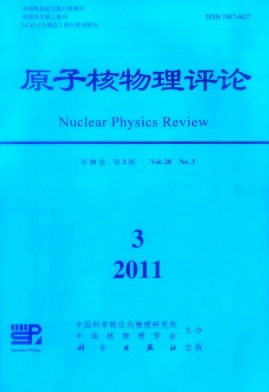Experimental Study of Tritium Release from Li17Pb83 Alloy
doi: 10.11804/NuclPhysRev.28.03.371
- Received Date: 1900-01-01
- Rev Recd Date: 1900-01-01
- Publish Date: 2011-09-20
-
Key words:
- Li17Pb83alloy /
- tritium /
- carrier gas /
- release
Abstract: Lithium\|lead alloy is considered to be one of the most prominent tritium breeding materials for the fusion reactor blanket because of its high breeding ratio, and low reactivity and possible use as coolant. An out\|of\|pile experiment of tritium release from Li17Pb83 alloy was performed after neutron irradiation on the base of mathematical model to describe tritium release behavior from an eutectic lithium\|lead alloy. The results suggest that the dominant chemical form of the released tritium (>99%) was the water\| insoluble component (HT or T2). Tritium residence time decreased with increasing H2pressure in carrier gas up to 1000 Pa, and above this concentration limit it became constant and not influenced by the plenum volume. The temperature dependence of the tritium release rate can be described by an Arrhenius law. Consequently, the present results on the kinetic parameters of tritium in molten Li17Pb83alloy are considered to be different from the values in literature, but it is the same that the overall release process is governed by the diffusion of tritium atoms in the Li17Pb83and by the heterogeneous reaction at the gas\|eutectic interface of the tritium atom recombination at temperatures from 633 to 973 K.
| Citation: | XIE Bo, WU Yi-can, CHEN Xiao-jun, WENG Kui-ping, LIU Jun, XIAO Cheng-jian, FDS Team. Experimental Study of Tritium Release from Li17Pb83 Alloy[J]. Nuclear Physics Review, 2011, 28(3): 371-376. doi: 10.11804/NuclPhysRev.28.03.371 |






 甘公网安备 62010202000723号
甘公网安备 62010202000723号 DownLoad:
DownLoad: